Wednesday, March 9, 2016
The Werewolf Roundtable
11:21 AM | Posted by
Not Now...Mommy's Reading
The Werewolf Roundtable 2015
Thanks to authors Ray Garton, Jeff Strand, Glenn Rolfe, and Jonathan Janz for joining me – W.D. Gagliani – for this expert werewolf roundtable. It’s exciting to talk to others who share some of my deepest interests! Thanks to our host, Not Now, Mommy’s Reading (Screaming for the month of October) for giving us the space, and thanks to fellow dark fiction scribe John Everson for convening this panel in the first place.
W.D. Gagliani: We have all been drawn to write about werewolves. So far for me, it’s been six novels in the Nick Lupo series (Wolf’s Trap, Wolf’s Gambit, Wolf’s Bluff, Wolf’s Edge, Wolf’s Cut, and the upcoming Wolf’s Blind), three short stories (“Clair de Lune” and “Moonshadow” with David Benton, and “The Christmas Wolf”), and two novellas (“Wolf’s Deal” and “The Great Belzoni and the Gait of Anubis”). Tell us how many it’s been for you, and what drew you to the subject. If it was one work that influenced you, what was it?
Glenn Rolfe: I’ve written Blood and Rain and a short story, “The Beast in Me.” Blood and Rain is was the first serious piece I ever wrote, and it sat around in various forms since August of 2011. I wrote "The Beast in Me" well after and it wound up in Infernal Ink Magazine. It’s about a teen afflicted with the curse in a nearby town of the one I made up for Blood and Rain.
A number of things drew me to werewolves. My big brother LOVED the beast. And like all little brothers, whatever the big one thinks is cool, so do we. Beyond that, I remember being mesmerized by the beginning of Michael Jackson's Thriller music video. Jackson of course worked with John Landis (writer and director of An American Werewolf in London) on the video. That birthed my interest. If I had to name one book, it would be Stephen King’s Cycle of the Werewolf. That got my initial idea for Blood and Rain percolating.
WD: What did your brother find cool about a werewolf, Glenn?
WD: Were you a fan of the John Landis movie before finding inspiration in the Thriller video?
Jeff Strand: I’ve written two novels (Wolf Hunt and Wolf Hunt 2), one short story (“Werewolf Porno”), and a novelette (“My Werewolf Neighbor,” which is bonus content in the hardcover edition of Wolf Hunt 2). What drew me to the subject was that I’d tackled zombies, vampires, serial killers, giant bugs, and many of the other classic tropes, so I thought it was time to give werewolves a try!
WD: Jeff, no deep, dark, repressed wish to have a monster burst out of you and wreak havoc on your enemies?
Jeff: Werewolves are not, in general, the happiest of monsters. If I were going to wreak havoc, I'd want to do it in King Kong form. You can make a case that being a vampire has its benefits, but an uncontrollable man-to-monster transformation every full moon sounds like a very inconvenient lifestyle. When they slaughter their enemies, it tends to be more of a "What have I done? What have I become?" instead of a "Woo-hoo! That rocked!"
WD: What POV did you adopt? Are your werewolves heroes or antagonists?
Jeff: The Wolf Hunt books are in third person. In the first book, the werewolf is a pure antagonist. The concept with Ivan is that even if he weren't a werewolf, he'd still be a sadistic serial killer. He's really awful. The second book adds a few more lycanthropes, one of whom is a little girl who just can't control her transformations, but overall, the werewolves are the bad guys.
 Jonathan Janz: Wolf Land is my first werewolf story, though I’ve long been a huge fan of the beast. I remember watching Silver Bullet, The Howling, and An American Werewolf in London when I was a kid, and those films really stuck with me. There’s something so...unchained about the werewolf, something so primal and unpredictable that you can imagine how horrifying it would be to watch a werewolf change. And I think those were the scenes that influenced me as a kid – the transformation scenes. You know what’s coming, you know what the end result of the change will be, yet you’re so transfixed and horrified by the human’s grisly alterations that you’re too terrified to flee. I remember the scene in The Howling when we see the werewolf change in some sort of office. In Silver Bullet, we watch Everett McGill say, “But it’s not my fault!” as he starts to change. Man, that scared me to death. So...while I really got into werewolf novels in my twenties, it was those early film experiences that set the stage for me.
Jonathan Janz: Wolf Land is my first werewolf story, though I’ve long been a huge fan of the beast. I remember watching Silver Bullet, The Howling, and An American Werewolf in London when I was a kid, and those films really stuck with me. There’s something so...unchained about the werewolf, something so primal and unpredictable that you can imagine how horrifying it would be to watch a werewolf change. And I think those were the scenes that influenced me as a kid – the transformation scenes. You know what’s coming, you know what the end result of the change will be, yet you’re so transfixed and horrified by the human’s grisly alterations that you’re too terrified to flee. I remember the scene in The Howling when we see the werewolf change in some sort of office. In Silver Bullet, we watch Everett McGill say, “But it’s not my fault!” as he starts to change. Man, that scared me to death. So...while I really got into werewolf novels in my twenties, it was those early film experiences that set the stage for me.
WD: Those movies all worked for me, too. Wolfen is another. Even though it’s not technically a werewolf movie, it has the right vibe and the effects are cool. Plus it was an urban setting, which was different.
WD: We all acknowledge Ray Garton is the superstar here. What about you, Ray?
WD: In your novels, you took a different road from most other writers of werewolf fiction. It struck me that, as the author of the ground-breaking Live Girls, you really did bring something a little different to the table here, too. Describe what led you to handle the subject as you did.
Ray: Live Girls linked vampires and sex and the sex industry. I wanted to do the something like that with werewolves, but the werewolf does not have the romantic cachet enjoyed by the vampire. Vampires have always been sexy, Bram Stoker wrote a very naughty book. But we just don't have that kind of association with werewolves, and they're so violent and tortured and, well, hairy that it's difficult to create one. I decided that erotic would not work with an honestly traditional werewolf and decided instead to go in the opposite direction: I made lycanthropy a sexually transmitted disease. I think Ravenous is a much more unpleasant book than Live Girls.
WD: It was a great idea! Wish I’d thought of it, lol! Thing is, Live Girls was THE novel in the 80s that steered me toward the so-called “splatterpunks” (like or hate the label) and influenced me by making me aware that I could bring some nasty sexual elements into my horror. King had taught me that vampires could live in my small town, and you taught me they could find me at a peep show in Times Square (among other things). That was cool! My first novel Wolf’s Trap is quite a bit nastier than it might have been thanks to you. What about your influences?
Ray: I think I was most influenced by the 1941 Universal
Studios movie The Wolf Man, and also by the earlier Universal movie Werewolf of London. They were also what initially drew me to the subject. The werewolf was probably my favorite monster as a boy, and I always thought the creature was sadly under-represented in horror movies. That's what made 1981 such a fantastic year – two great werewolf movies back to back, The Howling and An American Werewolf in London.
WD: The Wolf Man was a huge influence on me, too. It really scared me at about age ten. Ironically it was also Abbott and Costello Meet Frankenstein that both scared and entertained me shortly thereafter. I felt drawn to the tragic Larry Talbot figure, a true anti-hero, a prisoner of his own monster. Talk about why you thought the werewolf was your favorite.
Ray: I think the werewolf first became my favorite monster because of Jack Pierce, who created the makeup. One of the initial draws to horror movies for me were the makeups and effects, and that was one of the best when I was a kid. Think of that, by the time I started watching monster movies 20-something years later, those effects and makeups were still the best. But even as a kid, I was fascinated by the story, and that fascination grew with time. It's the human condition but with more hair. In one way or another, we are all our own worst enemies.
WD: Absolutely – the beast within! The dark side all humans have. Where does evil comes from? I believe from inside. We all have a beast waiting to burst out, figuratively if not literally. Werewolves allow us to explore the idea metaphorically.
WD: Can anyone weigh in on the sexy werewolf? Ray brought it up (as in it's not). It's funny, I agree that it's not as sexy as the vampire has become, but then some years ago I found myself staring at all these covers of paranormal romances and urban fantasy books with sexy wolves... I’ve since learned that many people find werewolves (and all shapeshifters) sexy! I tapped into that unconsciously early on, and later maybe quite a bit more consciously. But I tried to keep the basic savagery of a true werewolf also in my books. How do you feel about that particular image? Are we in danger of romanticizing our monster? Or is that a logical direction?
Jonathan: That’s a question I’d never considered before, but now that I think about it...well, I guess the element of danger in that character...the air of the forbidden or the knowledge of the power brewing inside that character...I think that could be sexy to other characters and readers alike. In Wolf Land, one of the female characters (who has also been bitten but who hasn’t yet changed) is powerfully attracted to a male character who has been bitten and who has already changed. It’s the allure of the unknown, the notion that he possesses an unfathomable power that attracts her to him. So I can imagine the unchanged werewolf being attractive to both characters and readers. But when the change takes hold, there’s nothing remotely sexy about it, unless berserk carnage, flying body parts, and spraying arterial blood is sexy to you. Who knows? For some, perhaps it is!
Glenn: There can be a set side of the wolf, but it’s that primal vibe. It’s that raw lust. It’s never going to be pretty and loving. It can’t be. The Beast isn’t capable. Even (your character) Nick Lupo, even in his attempts at love, when it comes to sex, the primal power steps in and is there. It doesn’t mean they’re incapable of love, but it makes gentle love making impossible. I feel like humans are attracted to that raw power. So it is understandable. Hell, Elisabeth Brooks in The Howling. If she doesn’t get your motor running... damn. So there is a place, but as a Horror writer, I still prefer the viscous beast over the set one.
WD: Ray’s novels present lycanthropy as an STD -- a brilliant move! How do you guys feel about sexualizing the werewolf? What lines would you not cross, if there are any?
Glenn: Yes! Garton’s STD angle was fantastic. I loved his take, but that was Garton. That was original. I don’t believe we should draw lines about what we should or shouldn’t do. If you can earn your take, go for it. That’s something I learned from a panel at World Horror Con 2013. Hank Schwable was talking about how you can do anything in a story as long as you earn it. You have to make it relatively reasonable.
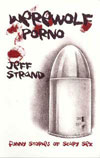 Jeff: I personally am not hot for werewolves, but Wolf Hunt 2 does have a werewolf sex scene that’s played for laughs at the expense of the horrified onlooker. My story “Werewolf Porno” is about the ill-fated efforts to make an adult film that captures a werewolf transformation in the middle of coitus. I’m not really a purist about any monsters (fast zombies, slow zombies…I like ’em both!) and I think you can do the romantic lycanthropes without spoiling it for those of us who want to write them as bloodthirsty savage frightening beasts.
Jeff: I personally am not hot for werewolves, but Wolf Hunt 2 does have a werewolf sex scene that’s played for laughs at the expense of the horrified onlooker. My story “Werewolf Porno” is about the ill-fated efforts to make an adult film that captures a werewolf transformation in the middle of coitus. I’m not really a purist about any monsters (fast zombies, slow zombies…I like ’em both!) and I think you can do the romantic lycanthropes without spoiling it for those of us who want to write them as bloodthirsty savage frightening beasts.
WD: On this topic, I’d have to add that the transformation scenes in the recent Netflix series Hemlock Grove turned out to be (for me, anyway) awesomely gruesome. Not only painful, but gross as the human parts (teeth, etc) literally get popped off every time, and then the entire human skin, and then the emerging wolf eats it all. That got my attention! Still, I thought painful transformations had been overdone, so I made my wolves transform without pain, but with a certain euphoria as their new senses wake up. It’s more magical than horrific, I guess. I tied it into a visualization process that leads to a “DNA realignment” to make it interesting. And, to mention SEX again (because sex sells!), I always make sure to reiterate that for most of my werewolves there is an increase in sexual aggressiveness (as evidenced by a pre-change erection in most cases). My favorite female werewolf character, a sort of “journalist as porn star” by the name of Heather Wilson, was predisposed to sexual misbehavior from the start, but becoming a werewolf increased her wild abandon exponentially. It makes for some hot scenes, and I’ve had good reader reaction in that area, LOL.
WD: So how do you all treat your transformations, how do you celebrate or distance yourselves from what's been done, and do you tie in any extra sexual connotations? Ray’s STD idea was great – but what else goes on? Is it just devouring human flesh as sex, or... completely asexual after the initial infection?
Jeff: The werewolf in Wolf Hunt can not only change form whenever he wants, but he can also do partial transformations. If he just wants a werewolf arm, no problem! The shapeshifting is instant, and one character notes that it almost looks like CGI. Unfortunately, he can’t speak when he’s in wolfman form, and he loves to talk, so there’s a lot of pain-free back and forth shifting. I went with a mythos that would be really cheesy if you saw it on a SyFy movie, but the special effects are better in your imagination, and in a book he’s a scary and dangerous character.
WD: This is exactly what I thought. My werewolves can change form at will and only partially as well, but Lupo didn’t know that until he saw others doing it. I liked giving him a fair amount of ignorance about his condition. Control (or lack of) became one of my favorite themes early on.
Jonathan: As much as I respect and learn from what’s gone before, I get so close to my characters that I don’t have the breathing room to think about what has happened in prior books or movies. So each change is unique to the individual, and each time that individual changes is a little different. For one, there’s definitely a twisted/sexual side to the change, a lust for domination and depraved wish fulfillment. For another, it’s total dread and tied into a fear of punishment. For yet a different character, it’s a preemptive desire to avoid the carnage and (almost equally) the guilt that will result from killing.
WD: I was asking about lines crossed or not crossed. How do you all feel about bestiality in our werewolf books and stories? Some authors revel in the human to canid couplings... I have for the most part stayed on this side of that line, except for some teasing almost-moments.
 Ray: I made the transformations painful and ugly because I couldn’t imagine them in any other way. Eddie Quist’s transformation in The Howling was a big inspiration. My werewolves are brutal animals that have very simple needs and desires – food and sex. I made them very aggressive sexually and what they do amounts to pretty brutal rape. I went out of my way to make those scenes as ugly as possible because I did not want to eroticize rape. Conspiracy-world boogeyman and Temple of Set founder Michael Aquino, with whom I was corresponding when I wrote Bestial, criticized that aspect of my werewolves. He and his wife Lilith are great admirers of wolves and he pointed out to me that they do not rape. That’s simply not something wolves do. I reminded him that werewolves are also part human, and humans can be pretty brutal, too. In Bestial, there is a consensual sex scene between two werewolves. The werewolves in both books attack and rape humans, which would qualify as bestiality, but instead of focusing on that, I pay more attention to the horror of the attack. If that makes sense.
Ray: I made the transformations painful and ugly because I couldn’t imagine them in any other way. Eddie Quist’s transformation in The Howling was a big inspiration. My werewolves are brutal animals that have very simple needs and desires – food and sex. I made them very aggressive sexually and what they do amounts to pretty brutal rape. I went out of my way to make those scenes as ugly as possible because I did not want to eroticize rape. Conspiracy-world boogeyman and Temple of Set founder Michael Aquino, with whom I was corresponding when I wrote Bestial, criticized that aspect of my werewolves. He and his wife Lilith are great admirers of wolves and he pointed out to me that they do not rape. That’s simply not something wolves do. I reminded him that werewolves are also part human, and humans can be pretty brutal, too. In Bestial, there is a consensual sex scene between two werewolves. The werewolves in both books attack and rape humans, which would qualify as bestiality, but instead of focusing on that, I pay more attention to the horror of the attack. If that makes sense.
WD: Yes, actually I admire real wolves too, and I even included a plea for Defenders of Wildlife, which I help support, in my last book. But like you, I make no real connection between noble wolves and werewolves, who are human-wolf hybrids and therefore combine brutality and savagery that might be characteristic of a pack of rabid wolves.
Jonathan: Hmm...if there are lines I won’t cross, I’m not sure what they are. I guess I’d only know that if I came to it, and I haven’t shied away yet. I will say that a couple of scenes I wrote in Wolf Land were really tough to write. But speaking specifically to the type of couplings discussed in the question... I do have a wolf couple mating, but that seemed natural to the story and the characters. But I don’t anything like that happening between the two species. I’m not saying others shouldn’t explore that, of course – just that it wasn’t part of my book.
Glenn: For me, yeah, watching Michael Jackson change from the gentle fellow into the beast was scary as hell. He was in pain, too. I gotta check out Hemlock Grove. I actually had the human teeth popping out in my transformation, too. Eating all of it though...that’s pretty cool and crazy. You never want to completely or intentionally copy what’s been done before, but that’s almost impossible. In my first draft of Blood and Rain, there were a lot of sexual moments. I thought what’s scarier than being killed by a beast... oh! being violated first! Well, while that may be true, I decided to cut those scenes from my manuscript. In the final book, I ended up just hinting at it once. Nothing against it, I just didn’t feel like putting them in there by the time I did my last rewrite. And yeah, I just read Wolf’s Gambit. When I read Heather Wilson....I see Heather Thomas! Those were definitely some hot and bothered scenes. I’m looking forward to the next book! I don’t really think about bestiality when I’m working. The monster will do what the monster will do.
(WD: Glenn, I always picture my character Heather as a combination of Jenna Jameson and Scarlett Johansson, but Heather Thomas works!)
WD: What POV did you adopt most often? Are your werewolves heroes or antagonists?
Glenn: Mine are mean and nasty. There’s nothing nice going on there. I do like (your) Lupo though, it’s a cool take. I also love that even though he’s good, sometimes the wolf has caused some serious harm to those Nick would never mean to hurt. It always depends on the story and the characters you are creating. I can’t see making a nice werewolf, but I would never say never.
Jonathan: Man, this is a great question, and one I hadn’t thought about since early in the writing of Wolf Land. But I wrote equally from the points-of-view of the infected and the regular humans (with a slight lean toward the wolves’ POV). I think quite a few werewolf tales are driven by a lycanthropic POV character, which makes sense since there’s so much potential there. But since my tale was a multiple POV story, I was afforded the ability to write from both sides of the issue and explore all the emotions and psychology involved with the werewolf "outbreak" in my small town.
WD: Any further thoughts on how werewolves differ from other monsters?
Glenn: What makes werewolves different? I mean, look at ours. Even within our chosen beast, they’re all different from one another. Why is that? Characters and people, situations...it all comes into play, but it really can be like that with every monster out there. Especially the human ones!
 WD: I don’t think we’re all in agreement about Ginger Snaps, because I liked the new approach and metaphor. I’m a fan of the UK’s Dog Soldiers, which in parts looks a lot like the way some of my books feel, at least to me. I mentioned earlier my continued love of the Universal movies, The Wolf Man and the Abbott and Costello, both with Lon Chaney as Talbot – those helped me shape my early views of my protagonist. I also liked the cheesy 70s ABC Movie of the Week entry Moon of the Wolf – that one’s worth tracking down… it’s very gothic. In the early days of writing my first novel, a syndicated TV show also had some influence on me: Forever Knight was about a cop who was a vampire, and it made me wonder how a werewolf would both benefit and be hurt by trying to work as a cop. I liked Hemlock Grove, the Netflix series based on Brian McGreevy’s novel, even though it was over the top and a bit trashy – all in good fun. The Showtime series Penny Dreadful also had/has good werewolf content, but it took a while to mature and they telegraphed it from the beginning, then springing it almost as a “surprise.” But I still have enjoyed it so far.
WD: I don’t think we’re all in agreement about Ginger Snaps, because I liked the new approach and metaphor. I’m a fan of the UK’s Dog Soldiers, which in parts looks a lot like the way some of my books feel, at least to me. I mentioned earlier my continued love of the Universal movies, The Wolf Man and the Abbott and Costello, both with Lon Chaney as Talbot – those helped me shape my early views of my protagonist. I also liked the cheesy 70s ABC Movie of the Week entry Moon of the Wolf – that one’s worth tracking down… it’s very gothic. In the early days of writing my first novel, a syndicated TV show also had some influence on me: Forever Knight was about a cop who was a vampire, and it made me wonder how a werewolf would both benefit and be hurt by trying to work as a cop. I liked Hemlock Grove, the Netflix series based on Brian McGreevy’s novel, even though it was over the top and a bit trashy – all in good fun. The Showtime series Penny Dreadful also had/has good werewolf content, but it took a while to mature and they telegraphed it from the beginning, then springing it almost as a “surprise.” But I still have enjoyed it so far.
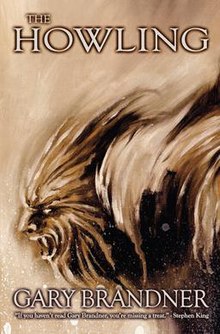 A few of my all-time werewolf favorites also include (whose doesn’t?) Robert McCammon’s The Wolf’s Hour, which I read back when it was first published and which was large in my mind when I started Wolf’s Trap. That book also gave me the confidence to delve into some actual family history and visit World War II. Charles Grant’s The Dark Cry of the Moon, of course. The Howling remains on my favorites shelf, as does S.P. Somtow’s Moon Dance. Tanya Huff’s Blood Lines series had an impact on me, and so did P.N. Elrod’s Vampire Files (though it’s not about werewolves). Also King and Straub’s The Talisman, which had a great character aptly named Wolf, was an early influence, and later “Some Touch of Pity” from Gary Braunbeck’s classic collection Things Left Behind.
A few of my all-time werewolf favorites also include (whose doesn’t?) Robert McCammon’s The Wolf’s Hour, which I read back when it was first published and which was large in my mind when I started Wolf’s Trap. That book also gave me the confidence to delve into some actual family history and visit World War II. Charles Grant’s The Dark Cry of the Moon, of course. The Howling remains on my favorites shelf, as does S.P. Somtow’s Moon Dance. Tanya Huff’s Blood Lines series had an impact on me, and so did P.N. Elrod’s Vampire Files (though it’s not about werewolves). Also King and Straub’s The Talisman, which had a great character aptly named Wolf, was an early influence, and later “Some Touch of Pity” from Gary Braunbeck’s classic collection Things Left Behind.
WD: Plug your newest works!
WD: Any further thoughts on how werewolves differ from other monsters?
Glenn: What makes werewolves different? I mean, look at ours. Even within our chosen beast, they’re all different from one another. Why is that? Characters and people, situations...it all comes into play, but it really can be like that with every monster out there. Especially the human ones!
Jonathan: I think something we’ve touched on that distinguishes werewolves is the horror of the transformation scene and the idea of horror happening right now. You get intimations of it with other monsters (I’m thinking particularly of Brendan Gleeson’s heartbreaking change toward a zombie-like victim of the rage virus in 28 Days Later or Chris Sarandon’s pencil-induced change in Fright Night), but no other monster changes so spectacularly. It really is darkly beautiful.
WD: Any other movies you’ve enjoyed – or hated?Glenn: Favorites are The Howling, American Werewolf in London, and Silver Bullet. Those I didn't care about? Wolf Cop is pretty stupid, but if you just want foolishness, it’s okay. I was never a fan of Ginger Snaps, either. The Howling 3 is pretty horrendous, as well.
WD: Any other movies you’ve enjoyed – or hated?Glenn: Favorites are The Howling, American Werewolf in London, and Silver Bullet. Those I didn't care about? Wolf Cop is pretty stupid, but if you just want foolishness, it’s okay. I was never a fan of Ginger Snaps, either. The Howling 3 is pretty horrendous, as well.
Ray: Unlike most horror fans I’ve talked to, I enjoyed Joe Johnston’s The Wolfman enormously. It’s not a perfect movie, but it was done with obvious love for the werewolf in general and the classic Lon Chaney movie in particular. There’s a relatively new one on Netflix called Late Stages, which I have not seen yet. I’ve heard good things, but I have to admit, based on the trailer it looks pretty familiar and even tepid.
 WD: I don’t think we’re all in agreement about Ginger Snaps, because I liked the new approach and metaphor. I’m a fan of the UK’s Dog Soldiers, which in parts looks a lot like the way some of my books feel, at least to me. I mentioned earlier my continued love of the Universal movies, The Wolf Man and the Abbott and Costello, both with Lon Chaney as Talbot – those helped me shape my early views of my protagonist. I also liked the cheesy 70s ABC Movie of the Week entry Moon of the Wolf – that one’s worth tracking down… it’s very gothic. In the early days of writing my first novel, a syndicated TV show also had some influence on me: Forever Knight was about a cop who was a vampire, and it made me wonder how a werewolf would both benefit and be hurt by trying to work as a cop. I liked Hemlock Grove, the Netflix series based on Brian McGreevy’s novel, even though it was over the top and a bit trashy – all in good fun. The Showtime series Penny Dreadful also had/has good werewolf content, but it took a while to mature and they telegraphed it from the beginning, then springing it almost as a “surprise.” But I still have enjoyed it so far.
WD: I don’t think we’re all in agreement about Ginger Snaps, because I liked the new approach and metaphor. I’m a fan of the UK’s Dog Soldiers, which in parts looks a lot like the way some of my books feel, at least to me. I mentioned earlier my continued love of the Universal movies, The Wolf Man and the Abbott and Costello, both with Lon Chaney as Talbot – those helped me shape my early views of my protagonist. I also liked the cheesy 70s ABC Movie of the Week entry Moon of the Wolf – that one’s worth tracking down… it’s very gothic. In the early days of writing my first novel, a syndicated TV show also had some influence on me: Forever Knight was about a cop who was a vampire, and it made me wonder how a werewolf would both benefit and be hurt by trying to work as a cop. I liked Hemlock Grove, the Netflix series based on Brian McGreevy’s novel, even though it was over the top and a bit trashy – all in good fun. The Showtime series Penny Dreadful also had/has good werewolf content, but it took a while to mature and they telegraphed it from the beginning, then springing it almost as a “surprise.” But I still have enjoyed it so far.
Jonathan: As for movies, three I haven’t talked about but absolutely love are Bad Moon (another Eric Red creation), the Ginger Snaps trilogy (particularly the first two), and my favorite werewolf film of all, Dog Soldiers which, for me, was pitch-perfect. In fact, I took some of my character names for Wolf Land from that movie. There’s an incredible fight in there featuring a character named Spoon and a huge wolf, which I sort of (subconsciously) channeled in a couple of my human-fighting-beasts scenes. Basically, you’ve gotta go as crazy as the beast does if you want to have any hope of surviving. I like it when characters do that.
WD: We should end on some reading recommendations. What are everyone’s favorite, most influential werewolf novels?
Jonathan: Firstly, I’d be remiss if I didn't mention W.D.’s work. Nick Lupo is an awesome character, and W.D.’s werewolf stories never fail to entertain and thrill me. Another series I really enjoyed was Gary Brandner’s The Howling books, particularly the first and the third in that series. Dark, filled with dread, and pretty unpredictable. Some others I love are Robert McCammon’s The Wolf’s Hour (which is probably my favorite werewolf novel), Stephen King’s Cycle of the Werewolf, Thomas Tessier’s The Nightwalker, and David Case’s Wolf Tracks. Another one most folks probably don’t know about is Joseph Payne Brennan’s Diary of a Werewolf, which is just fantastic. The Guns of Santa Sangre by Eric Red was also a blast. A couple other werewolf books I loved were Leslie Whitten’s Moon of the Wolf and Charles L. Grant’s The Dark Cry of the Moon.
Ray: Thomas Tessier’s The Nightwalker and Robert McCammon’s The Wolf's Hour are among my favorites. And I’ve enjoyed the Nick Lupo books I’ve read enormously, Bill.
Jeff: It’s a pretty obvious choice to say that my favorite werewolf novel is The Wolf’s Hour by Robert McCammon…but it is. Another favorite is The Frenzy Way by Gregory Lamberson.
WD: First, thanks to all you guys for participating. And special thanks for mentioning my novels… You know I’m a fan of all your work, too. I’ve just started Blood and Rain, by the way, and Wolf Land is on my iPad. Ray’s books are legendary, of course, and helped start me down this road! And I read Jeff starting back in the days of his Andrew Mayhem books.
 A few of my all-time werewolf favorites also include (whose doesn’t?) Robert McCammon’s The Wolf’s Hour, which I read back when it was first published and which was large in my mind when I started Wolf’s Trap. That book also gave me the confidence to delve into some actual family history and visit World War II. Charles Grant’s The Dark Cry of the Moon, of course. The Howling remains on my favorites shelf, as does S.P. Somtow’s Moon Dance. Tanya Huff’s Blood Lines series had an impact on me, and so did P.N. Elrod’s Vampire Files (though it’s not about werewolves). Also King and Straub’s The Talisman, which had a great character aptly named Wolf, was an early influence, and later “Some Touch of Pity” from Gary Braunbeck’s classic collection Things Left Behind.
A few of my all-time werewolf favorites also include (whose doesn’t?) Robert McCammon’s The Wolf’s Hour, which I read back when it was first published and which was large in my mind when I started Wolf’s Trap. That book also gave me the confidence to delve into some actual family history and visit World War II. Charles Grant’s The Dark Cry of the Moon, of course. The Howling remains on my favorites shelf, as does S.P. Somtow’s Moon Dance. Tanya Huff’s Blood Lines series had an impact on me, and so did P.N. Elrod’s Vampire Files (though it’s not about werewolves). Also King and Straub’s The Talisman, which had a great character aptly named Wolf, was an early influence, and later “Some Touch of Pity” from Gary Braunbeck’s classic collection Things Left Behind.WD: Plug your newest works!
Ray: My newest is A Little Gray Book of Grim Tales from Borderlands Press, which is made up of four of my best short stories from the past ten years. My novel Frankenstorm is still available as an ebook and in paperback from Pinnacle Books. Almost all of my original novels are available from Open Road Media. I'm working on a new novel called Monster Show and I've been writing more short stories in the last couple of years than ever before. I’ve had stories in Volume 4 of the Dark Screams anthology series (with Clive Barker, Ed Gorman, Heather Graham, and Lisa Morton), as well as Shrieks and Shivers from the Horror Zine, A Dark Phantastique, Eulogies III, and others. You can keep up with new releases at my website RayGartonOnline.com.
Glenn: Blood and Rain is my new available work. http://www.amazon.com/Blood-Rain-Glenn-Rolfe-ebook/dp/B010D3KPHG My next Samhain release ( a novella called Things We Fear) comes out in March. My website is: http://glennrolfe.com/
Jonathan: My website is www.jonathanjanz.com , I'm on Twitter, Facebook, and Goodreads as Jonathan Janz. My three newest releases are Wolf Land (November 3rd), The Nightmare Girl, and Exorcist Road. My Amazon author page:
http://www.amazon.com/Jonathan-Janz/e/B008IIP7J0/ref=sr_ntt_srch_lnk_6?qid=1432738744&sr=8-6
http://www.amazon.com/Jonathan-Janz/e/B008IIP7J0/ref=sr_ntt_srch_lnk_6?qid=1432738744&sr=8-6
Jeff: My website is www.JeffStrand.com. If I’m going to plug something, I guess I should say that “Werewolf Porno” is included in my short story collection Gleefully Macabre Tales.
WD: My sixth Nick Lupo horror-thriller, Wolf’s Blind, is out from Samhain December 1. Recently I published a Lupo novella, Wolf’s Deal, exclusively for the Kindle. And the story “Clair de Lune,” written with my friend and frequent collaborator David Benton, is included in the anthology The X-Files: Trust No One, edited by Jonathan Maberry. My websites are www.wdgagliani.com, www.williamdgagliani.com, plus www.facebook.com/wdgagliani and on Twitter I can be found here: @WDGagliani. My Amazon author page: http://www.amazon.com/W.D.-Gagliani/e/B002BMHHPQ/ref=dp_byline_cont_ebooks_1
Thanks… It was great talking to you about a subject we all agree is interesting as hell!
Subscribe to:
Post Comments (Atom)
Our Rating System









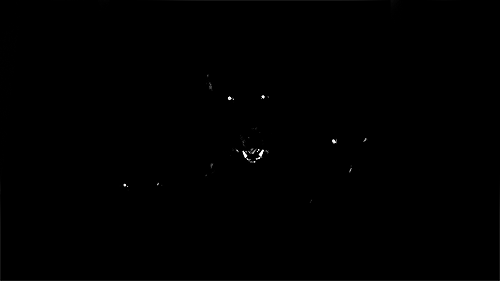



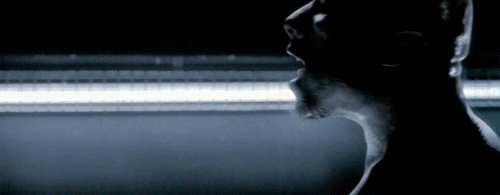




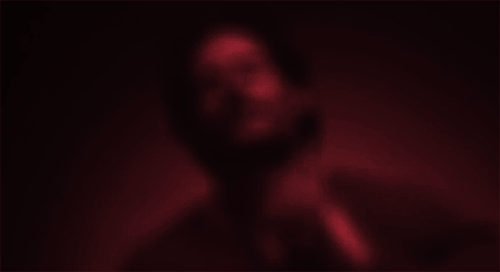
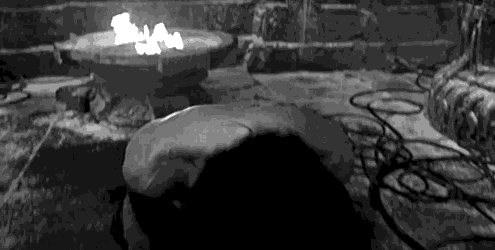
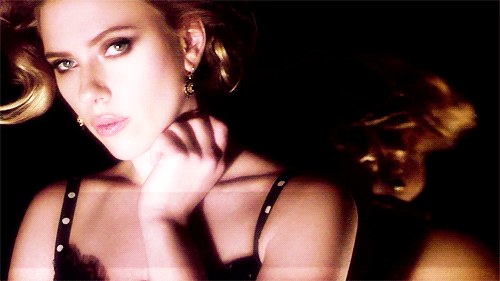
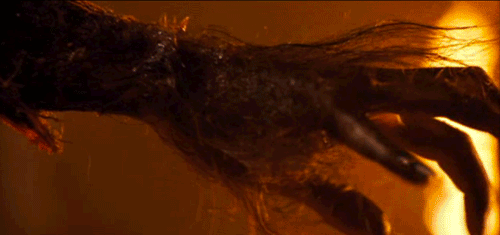








0 comments:
Post a Comment